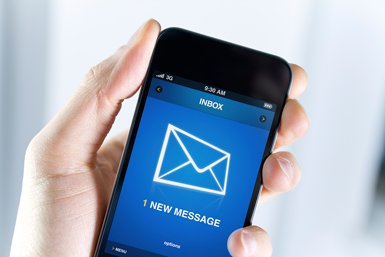An effective subject line is your key to high open rates and potentially high click-through rates. Whether you are sending a daily digest, monthly newsletter, or news on an as-needed basis, effective subject lines are what will compel your readers to dive in. Here are 6 of our dos and don’ts for writing email subject lines:

Do make sure it’s different than your preview text.
“53% of total email opens occurred on a mobile phone or tablet in Q3 2014. This is an increase from the 48% percent seen in Q2 2014.” (Experian)
How many emails do you check on your phone? How often is that number dictated by how well a subject line and preview text are written? You have limited real estate to work with in a mobile preview so make sure your subject line and preview text describe as much of what the email contains in as few words a possible to give a great teaser effect.
Don’t make it too long (or too short).
An email subject line should be no longer than 50 characters, as it will get cut off on most mobile and some desktop readers if it is any lengthier than that. How long is 50 characters?
6 Dos and Don’t of Effective Email Subject Lines. That line is 48 characters with spaces.
Choose which piece of your email is going to be the most compelling to potential readers and use that as your subject. Write a few options, at least three, before selecting and tweaking your best and final line.
Do test your subject lines.
If you’re in between two different options of subject lines, use them both. A/B testing of email subject lines is a great way to find out what attracts your audience. Test which line garners you the higher open rate and higher click-through rate to the related article by sending one to half your list and one to the other half. Both numbers will give you insight on how reflective and effective your subject lines are.
Don’t be misleading.
Subject lines that imply the delivery of specific content need the emails to deliver on that content. If you lead with “coupon inside” then you should truly offer a coupon. If you’re having trouble coming up with an alluring subject line based on your content, then your content may not be that alluring!
Another frequently used misleading “trick” is to start the subject line with “Re:” so that the recipient thinks the email is in response to one they previously sent. This is spammy, deceptive, and will promptly land you a new unsubscriber.
Do use correct grammar.
Subject lines with misplaced punctuation, content in ALL CAPS, and other typos reflect poorly upon your brand. Grammatical errors happen from time to time but your subject line is not the place you want it to occur. Double check your subject lines by sending yourself and a colleague a test email before scheduling your email to go out.
Don’t include fake names.
If using personalization tokens in your subject lines, make sure you’re not sending them to “asdf” or “john smith”—typical fake names that prospects may have used when submitting forms on your website. Do this by cleaning your lists regularly and removing any contact information that appears fake. This will give you a chance to also remove fake email addresses, company names, and other data that could skew your email marketing results.


Comments